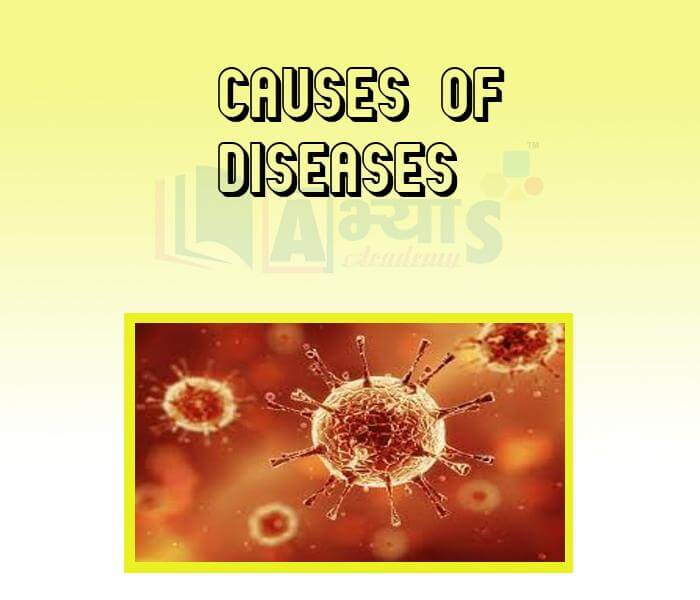Causes of Diseases













Causes of Diseases
Causes of Diseases: Most of the diseases will have many causes, rather than one single cause. These causes of diseases are classified into two types:
Poor health due to inadequate diet: It occurs due to deficiency of one or more nutrients, making the person unhealthy or susceptible to diseases, e.g. kwashiorkor, a nutritional deficiency disease occurring due to low protein diet. So, lack of good nourishment becomes second level of cause of disease.
Genetic disorders: These are present since birth; pass down from parents to offsprings, e.g. haemophilia.
Various pollutants present in environment : Pollutants in air, water and soil also contribute in causing diseases, e.g. intensive use of nitrate fertiliser causes methaemoglobinaemia.
Improper functioning of any body organ : Non-communicable diseases (i.e. non-spreadable diseases) like diabetes, blood pressure and heart diseases are due to the malfunctioning of body organs.
Lack of public services or poor economic conditions. It also contributes to the cause of disease. These causes become the third level cause of disease.
Note: The diseases, which are caused when organ and tissues degenerate and do not work well with increasing age are called degenerative diseases. Arthritis, disturbed sight and hearing defects are all degenerative diseases.
Infectious and Non-infectious Causes: Immediate causes of diseases belong to two distinct types.:
Lack of essential nutrients/substances in our diet, e.g. proteins, vitamins, minerals, etc.
Uncontrolled growth of tissues in any part of body.
Damage to any part by accident or by other means.
Virus causes the following disease in a man ____________________ | |||
| Right Option : A | |||
| View Explanation | |||
Botulism caused by clostridium botulinum affects ________________ | |||
| Right Option : B | |||
| View Explanation | |||
Jaundice is a disease of ______________ | |||
| Right Option : B | |||
| View Explanation | |||
Students / Parents Reviews [10]
My experience was very good with Abhyas academy. I am studying here from 6th class and I am satisfied by its results in my life. I improved a lot here ahead of school syllabus.

Ayan Ghosh
8thAbhyas Methodology is very good. It is based on according to student and each child manages accordingly to its properly. Methodology has improved the abilities of students to shine them in future.

Manish Kumar
10thAbhyas is a complete education Institute. Here extreme care is taken by teacher with the help of regular exam. Extra classes also conducted by the institute, if the student is weak.

Om Umang
10thOne of the best institutes to develope a child interest in studies.Provides SST and English knowledge also unlike other institutes. Teachers are co operative and friendly online tests andPPT develope practical knowledge also.

Aman Kumar Shrivastava
10thAbout Abhyas metholodology the teachers are very nice and hardworking toward students.The Centre Head Mrs Anu Sethi is also a brilliant teacher.Abhyas has taught me how to overcome problems and has always taken my doubts and suppoeted me.

Shreya Shrivastava
8thBeing a parent, I saw my daughter improvement in her studies by seeing a good result in all day to day compititive exam TMO, NSO, IEO etc and as well as studies. I have got a fruitful result from my daughter.

Prisha Gupta
8thIt has a great methodology. Students here can get analysis to their test quickly.We can learn easily through PPTs and the testing methods are good. We know that where we have to practice

Barkha Arora
10thIt was good as the experience because as we had come here we had been improved in a such envirnment created here.Extra is taught which is beneficial for future.

Eshan Arora
8thA marvelous experience with Abhyas. I am glad to share that my ward has achieved more than enough at the Ambala ABHYAS centre. Years have passed on and more and more he has gained. May the centre flourish and develop day by day by the grace of God.

Archit Segal
7thIt was a good experience with Abhyas Academy. I even faced problems in starting but slowly and steadily overcomed. Especially reasoning classes helped me a lot.
